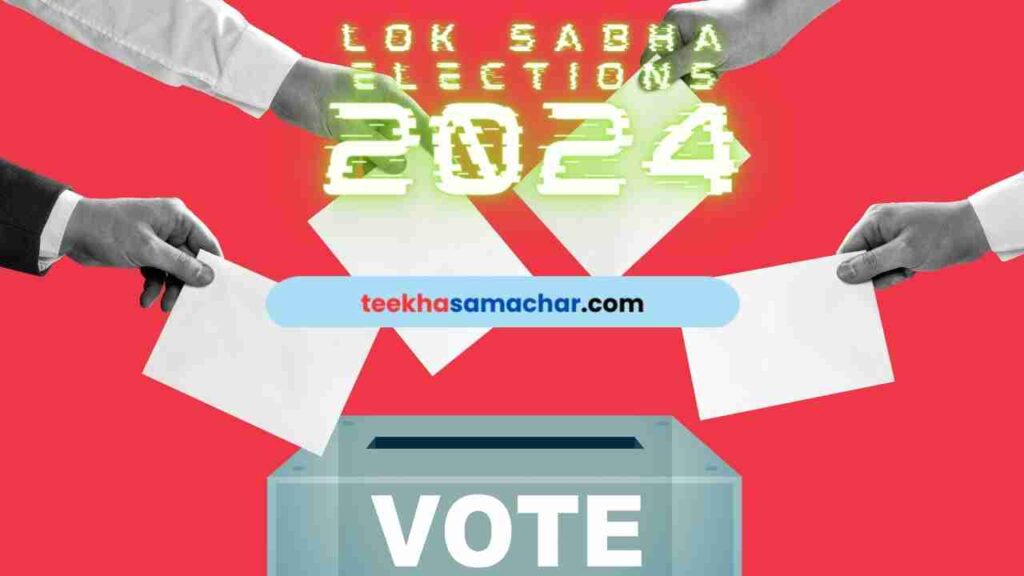BJP Unveils First List of 195 Candidates : In a strategic move to secure a massive advantage in the upcoming Lok Sabha elections, the Bharatiya Janata Party (BJP) has released an ambitious list of 195 candidates, eyeing a victory in 370 seats. This announcement, made before the election dates are even notified, positions the party’s top leaders and key figures to lead the electoral battle.
BJP Unveils First List of 195 Candidates for Lok Sabha Polls, Targets 370 Seats

Prime Minister Narendra Modi is set to contest from Varanasi, marking his third consecutive run from the holy city, while Home Minister Amit Shah will seek re-election from Gandhinagar, Gujarat. The list features a blend of seasoned politicians and fresh faces, including Defence Minister Rajnath Singh from Lucknow and Smriti Irani from Amethi, alongside Lok Sabha Speaker Om Birla from Kota, Rajasthan.
Key Highlights from the Candidate List
- Diverse Representation: The BJP has emphasized diversity in its candidate selection, including 34 Central and state ministers, two former chief ministers, 28 women, 47 leaders under 50, and 57 members from the OBC community. The strategic choice of candidates reflects the party’s aim to cater to various demographic segments across the country.
- Focus on Crucial States: With 51 candidates from Uttar Pradesh, 20 from West Bengal, and five from Delhi, the party is concentrating on states critical for securing a parliamentary majority.
Delhi’s Political Reshuffle
In a notable shift, the BJP has replaced four of its five MPs in Delhi. Notably, Meenakshi Lekhi, Harsh Vardhan, Parvesh Verma, and Ramesh Bidhuri have been sidelined. Manoj Tiwari remains the only incumbent to retain his seat, with candidates for the remaining two constituencies still under wraps.
The Strategy Behind the Selection (BJP Unveils First List of 195 Candidates)
The candidate list emerges from an exhaustive and technology-driven process, incorporating feedback from voters and performance evaluations of sitting MPs. A notable five-hour meeting led by PM Modi underscored the deliberative effort behind these decisions.
This meticulous approach also signals a tactical move against the opposition INDIA bloc, highlighting its ongoing struggles with seat-sharing agreements and consensus-building, particularly in West Bengal and Punjab.
Ministers and Key Constituencies: BJP’s Strategic Nominations and Political Dynamics
The BJP’s unveiling of candidates for the upcoming Lok Sabha elections not only showcases the party’s commitment to diversity but also strategically places key ministers in crucial constituencies. These decisions hold significant implications for the electoral landscape, reflecting the party’s efforts to strengthen its foothold in various regions. Here’s an in-depth look at some of the ministers and their assigned constituencies:
1. Mansukh Mandaviya – Porbandar, Gujarat:
- Profile: As the Health Minister and a Rajya Sabha member, Mansukh Mandaviya brings administrative experience and a track record of policy implementation.
- Significance: Contesting from Porbandar, Gujarat, Mandaviya’s nomination indicates the party’s confidence in his ability to connect with the local electorate and address regional concerns, especially considering his previous role in Gujarat politics.
2. Rajeev Chandrasekhar – Thiruvananthapuram, Kerala:
- Profile: Rajeev Chandrasekhar, a Rajya Sabha member and minister, has been nominated for the Thiruvananthapuram constituency, currently held by Congress’ Shashi Tharoor.
- Political Significance: This move underscores the BJP’s ambition to challenge strongholds traditionally held by opposition parties. Thiruvananthapuram, being a high-profile constituency, sets the stage for a fierce political battle and reflects the BJP’s determination to expand its presence in South India.
3. Jyotiraditya Scindia – Guna, Madhya Pradesh:
- Profile: A prominent leader who recently switched allegiance from the Congress to the BJP, Jyotiraditya Scindia brings both regional influence and national political experience.
- Political Context: His decision to reclaim the Guna constituency in Madhya Pradesh, a seat he held until his defeat in 2019, marks a strategic move. It not only aims at consolidating Scindia’s political standing but also symbolizes the BJP’s efforts to capitalize on defections and realignments within the opposition.
4. Bhupender Yadav – Alwar, Rajasthan:
- Profile: As a Rajya Sabha colleague, Bhupender Yadav is a seasoned politician with a background in law and governance.
- Electoral Significance: Fielded from Alwar, Rajasthan, Yadav’s nomination indicates the BJP’s focus on crucial battleground states. Alwar, with its historical and political significance, becomes a key constituency to watch, shaping the narrative of the party’s performance in the state.
5. Kiren Rijiju – Arunachal West:
- Profile: As the Law Minister and a prominent BJP leader from the Northeast, Kiren Rijiju’s inclusion in the list reinforces the party’s commitment to regional representation.
- Regional Focus: Contesting from Arunachal West, Rijiju’s candidacy reflects the party’s strategy to consolidate support in the Northeast, showcasing a blend of national leadership and regional sensitivity.
6. Sarbananda Sonowal – Dibrugarh, Assam:
- Profile: Former Chief Minister of Assam and Union Minister, Sarbananda Sonowal, holds significant political clout in the region.
- Political Dynamics: His decision to fight from Dibrugarh is strategic, aiming to reinforce the BJP’s position in Assam and addressing regional sentiments.
7. Arjun Munda – Khunti, Jharkhand:
- Profile: A seasoned politician with past experience as the Chief Minister of Jharkhand, Arjun Munda is a prominent tribal leader.
- Regional Focus: The choice of Khunti in Jharkhand indicates the BJP’s commitment to tribal representation and a nuanced approach to regional dynamics.
ALSO READ : MP Lok Sabha Elections 2024: A Battle for the Heart of India
